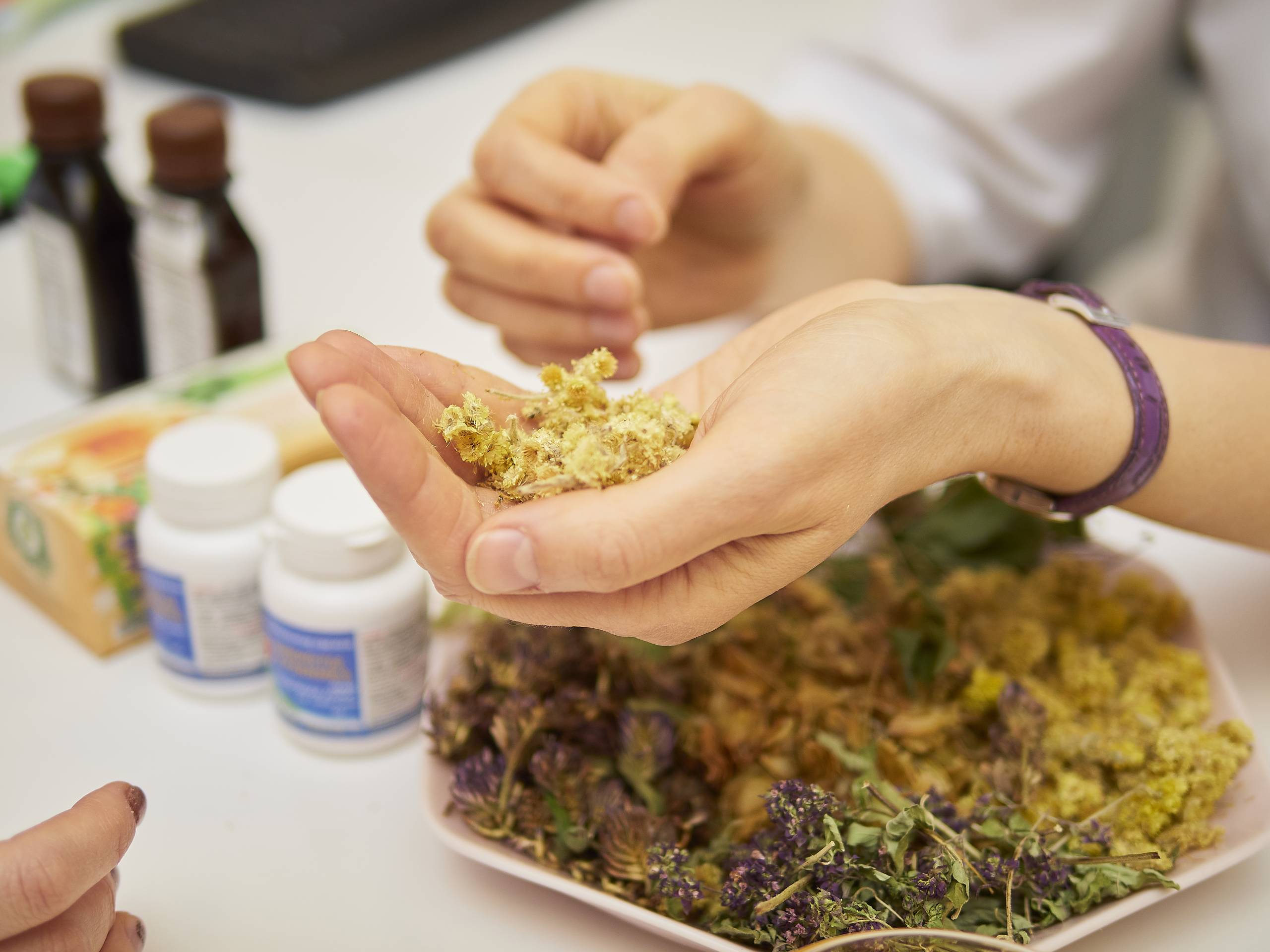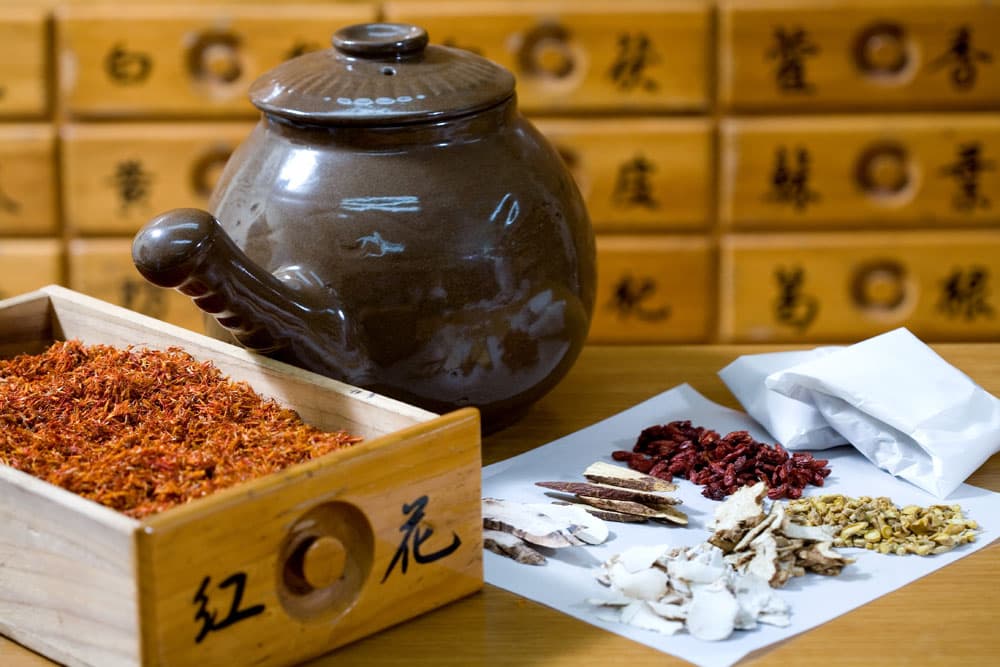Pharmaceuticals are not an unconditional good. On the one hand, they save people’s lives, but on the other, they often cause new diseases. Meanwhile, in many cases there is no need to resort to potent chemicals, because there are literally drugs created by nature growing under our feet.
According to World Health Organization experts, about one percent of the world’s population dies annually from complications of drug therapy. Many more people suffer from side effects, which reduce the quality of life and initiate pathological processes. An alternative to conventional pharmacotherapy is phytotherapy, i.e. treatment with plants. Extracts from medicinal plants exhibit medicinal properties comparable to those of conventional drugs, and have fewer side effects.

Phytotherapy is often attributed to folk medicine and on this basis conclude that it is unscientific method of treatment. To resolve doubts, let’s clarify the meaning of the term “traditional medicine”. Traditional medicine should be regarded as a totality of knowledge, skills, traditions, habits, techniques, which use the inhabitants of a particular area for the treatment, prevention and recovery. To draw a line between official medicine and folk medicine, it is enough to look at folk medicine as domestic, existing outside of medical institutions. There is domestic phytotherapy (or folk medicine because it is loved by the people), just as there is domestic surgery, therapy and even gynecology. We should not confront traditional skills with the relevant branches of medicine; it is more correct to consider them as the initial steps of the high ladder of special knowledge.
The living roots of phytotherapy
Throughout virtually all of human history, plants have been the primary medicines. Ancient man could only survive under certain conditions. These were the physical and chemical parameters of the environment (temperature, air composition, water availability), and successful competition with other biosystems, such as predatory animals and microorganisms, and sufficient food. But to survive, we also need therapeutic factors that allow the human body to artificially increase its vitality, resist infections, and repair damage.
If we are talking about something at least close to a “perpetual motion machine”, it is, of course, living matter – biological objects. Nature has created subtle mechanisms capable of maintaining vital functions practically in any conditions of planet Earth, which means absorbing and transforming energy; recreating and maintaining structural integrity (regeneration), multiplying, modifying the environment. The human body is an open self-regulating biological system. Any biosystem (and man as well) is capable of repairing itself to a greater or lesser extent – to heal itself. Healing is the process of meaningful use of environmental factors and mobilization of self-regulation mechanisms for complete or partial restoration of the structural and functional integrity of the body.
According to nature’s plan, plants and animals can serve as food for humans. Consequently, both theoretically and practically they contain a complete set of means for maintenance and regulation of vital functions. Medicine was born at the same time as the first humans. He ate the plant that his body “asks for” – phytotherapy (therapy); he rubbed his skin in certain places – reflexotherapy; he pulled out a splinter – surgery; he delivered a baby – obstetrics and gynecology.
Gradually, man accumulated experience of the beneficial effects of food and certain plants on the body; there appeared people specializing in the treatment of fellow tribesmen – that was the beginning of medicine and pharmacology. The use of plants for therapeutic purposes was the beginning of phytotherapy.

Can we call what healers did centuries ago a science? Absolutely, because they did it consciously, using certain knowledge and practical experience. Clearly, they could only use the knowledge that was available to them at the time. They were guided by the principle that practice was the criterion of truth. But was Hippocrates a scientist and, accordingly, medicine of that time – a science? I think the answer is unequivocal: yes. The fact that he did not even have a paramedic’s education should not be considered a serious objection. What is important for modern medicine is not just when this or that method or remedy was developed or what it should be called; it is their essence and the (not only positive) experience of using it.
Phytotherapy Today
Phytotherapy constantly absorbs a tremendous flow of information, which enriches any science, any medical method. It is a normal course of events – the experience of the past is enriched with new data, and on the basis of their qualified interpretation algorithms are created for more effective solutions of certain problems.
The present mankind overestimates its scientificity. Moving to virtual worlds, disconnecting from reality in its theoretical reasoning (often erroneous), working not with concrete biological materials but with indices, abstract symbols, hypothetical schemes, man often forgets about himself – the primary material, about limited and very specific possibilities of his body.
What does modern phytotherapy consist of? One of the directions is the study of the experience of treatment of diseases by different medical schools: Russian, Tibetan, Indian, Greek and others (each nation has its own medical traditions). After expert and statistical processing of ancient recipes, experimental and clinical verification of the obtained data is carried out.
The study of the chemical composition of medicinal plants and products of their primary processing is engaged in pharmacognosy. If in the old days the appropriateness of the use of certain plants was determined on the basis of empirical experience, with the development of chemistry and biochemistry it became possible to put the scientific basis. The isolation of biologically active substances with a known spectrum of pharmacological action served as the basis for the production of phytopreparations. Phytopharmacology is the most important scientific component of phytotherapy, studying the interaction of plants and extracts from them with living organisms. It is not in vain that people strive to surround themselves with plants – they plant trees in their yards, put flower pots on the windowsill. It is known that some plants have a beneficial effect on the psyche, vision, functions of internal organs. Aromatherapy is based on the effect of chemical compounds released by plants.
The principles of phytotherapy, treatment algorithms are created based on the integration of knowledge about diseases, about plants, experience in using plants.

There are no isolated disorders in the body. Any disease is a set of changes. It is no coincidence that doctors very rarely prescribe a single drug, more often they select several medicines that provide a complex effect. Many modern medications include several ingredients, thus achieving greater efficacy. Phytotherapy is a prime example of an integrated approach.
Many years of practice as a phytotherapist have led me to the belief that if the abnormalities present in the body are correctly evaluated and the components of the phytocomposition are adequately selected, then there is a correction of the set of disorders and even in difficult cases the probability that the main desired effect will be achieved increases. After all, each plant contains thousands of chemical compounds, capable of triggering a whole cascade of biochemical reactions. This phenomenon we have called “the phenomenon of pharmacological networks”.
Some scientists and doctors treat multicomponent drugs (including herbal remedies) with apprehension because such preparations cannot be fully standardized and the mechanisms of their action cannot be fully explained. But even when applying an individual substance, it is impossible to accurately predict the result, because the mechanisms of action are not always clear, and the individual reactions of the body are manifold. Foodstuffs, fruits, vegetables can also be harmful, but we neglect this risk, because it is not comparable to the beneficial effect.
Man is very intimately, on a subtle biochemical level, connected with his native nature, his roots are in it. Of the 20,000 plant species growing in our country, about 10 percent are used in folk medicine. Over 5,000 species have undergone preliminary biochemical studies and no more than 500 species have been comprehensively studied. This is a colossal potential. Chemically, plants are much closer to the human body than synthetic drugs. In the course of evolution, humans have adapted to the assimilation of natural chemical compounds, so they have a mild, physiological effect. There are substances in nature that are necessary for the treatment of a wide variety of diseases. Based on practical experience, I can say that phytotherapy can help in one way or another every patient with any disease. Treatment with plants has an important place in the treatment of functional disorders, chronic recurrent diseases therapeutic profile, dermatosis, diseases of the nervous, immune, endocrine system, genitourinary organs, musculoskeletal system. Medicinal plants are essential in the treatment of cancer.
Whoever comprehends the secrets of phytotherapy will find the keys to a tangible increase in longevity and quality of life.
Phytotherapy – the oldest method of treatment
The history of phytotherapy began with the history of mankind. Animals and man were searching for edible and medicinal plants by trial and error. This process can be considered a spontaneous and very long pharmacological experiment, which was replaced by a deliberate study of the medicinal properties of plants and methods of their use. Information about medicinal plants was transmitted orally from generation to generation, later observations began to be recorded on clay slabs, papyrus, in books. Healers were usually the most educated people of their time.

The oldest written evidence of phytotherapy is the clay tablets with records of plants and diseases found in Assyria. Healing properties of plants are also mentioned in the monuments of other ancient cultures: Sanskrit, Egyptian, Chinese, Greek, Roman. One Hippocrates (460-377 B.C.), the second representative of a famous medical family, was the author of a work that summarized all the experience of Greek medicine, including the experience of using more than 230 medicinal plants. Aristotle’s pupil Theophrastus (372-287 B.C.), the “father of botany,” completed his “Study of Plants,” which included descriptions of several hundred medicinal herbs.
The founder of European pharmacognosy was the Roman scholar Dioscorides (1st century A.D.), whose work “Materia medica” includes descriptions of about 600 plants and summarizes the experience of Egyptian, Babylonian, Sumerian, Roman and Greek medicine. The production of extractive preparations (decoctions, tinctures) was initiated by the Roman physician Claudius Galen (129-201 AD).
Prominent representative of Arabic medicine, Tajik by nationality, Abu Ali Ibn Sina (XI century), known in Europe as Avicenna, has described in his book “The Canon of Medicine” about 900 medicines and methods of their use, and Ibn Baytar, a Spanish Arab, has described 1400 medicinal plants.
European apothecaries were established according to the Arab model and at first used mainly imported Arabic raw materials. Medieval European herbalists were mostly compilations from the works of Dioscorides, Galen, Ibn Sina, and Ibn Baitar.
There were also Eastern schools of medicine, primarily the Indian school of medicine and the Tibetan school associated with it. The most ancient written monument describing the medicinal plants of India and their uses, the Yajur Veda (the science of life), dates back to the first century B.C. Some Indian plants, such as chilibukha and rauwolfia, entered European medical practice.

The first Chinese book on herbs (Ben Cao) appeared as early as 2600 B.C. It contained descriptions of 900 kinds of medicinal plants. In the 16th century, a book by Li Shi-Zhen was published, which contained information about 1,892 medicinal remedies, mostly from plants.
The number of medicinal plants known to physicians grew thanks to great geographical discoveries. For example, the bark of the cinquefoil, an American plant that had long been the only remedy for malaria, entered the arsenal of healers.
The use of the plant was based on empirical observations. Only at the end of the 18th century, the Swedish pharmacist K. Scheele developed the first methods of chemical analysis of plants, which were developed in the 19th and 20th centuries.
